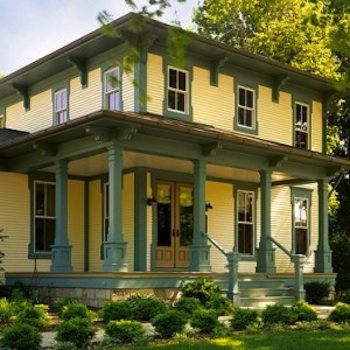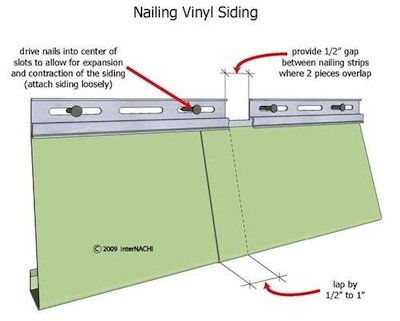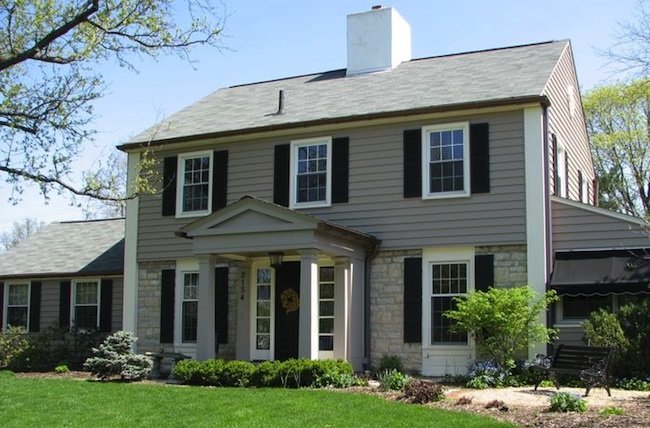We may earn revenue from the products available on this page and participate in affiliate programs. Learn More ›
Sometimes you’ve got to hand it to prehistoric man. Not because he discovered fire, and not because he invented the wheel. But rather because, so early in history, he struck upon one important key to enjoying this life: the low-maintenance home exterior.
Caves, after all, require neither painting nor patching nor power-washing… and they weather beautifully. It was thousands of years later, in the 1960s, when modern man finally developed vinyl siding, a material whose modest upkeep finally rivals that of cave dwelling.
Vinyl siding should actually be called PVC siding, if you want to be a stickler, since PVC is largely what comprises this building product, so popular from Fargo to Fort Lauderdale. Yup, PVC. The same stuff that moves water through your home’s interior also repels water on its exterior.

At first, vinyl siding was prone to cracking and warping, but advances in the 1970s reengineered the product to make it much as it is today—weatherproof, insect-proof, fade-resistant and under normal conditions, virtually indestructible. Some manufacturers, such as Mastic, offer vinyl siding that can resist wind speeds up 240 miles per hour.
Of all types of home siding, vinyl has the cheapest installed cost, according to the Vinyl Siding Institute (VSI). In fact, its durability and low price point have helped make vinyl siding the most popular exterior cladding choice in America.
New offerings in size and texture have further boosted its popularity. Today, vinyl siding comes in a range of colors and designs, some of which closely resemble wood grain. These are suitable not only for new construction, but also for replicating the look of vintage siding in renovations of older homes.
INSTALLATION
So long as it’s straight and watertight, vinyl siding can be installed over nearly any surface, even brick or stucco.

The product is not so much attached as it is hung. Rails are nailed into the house, but they’re done so in a “loose” fashion. That is, the nails are left just a hair proud, so the rails can slide back and forth on the wide-slotted nail holes. The vinyl siding panels are hung from these rails, free to expand and contract over the course of the year with temperature fluctuations.
OTHER OPTIONS
Because of its loose installation and relatively thin composition, vinyl siding can sometimes look and feel flimsy. And it’s been to known to buckle in very hot temperatures. For these reasons, manufacturers have pursued alternate means of fabrication, in some cases opting instead to use polypropylene, which is thicker and hardier than regular vinyl siding.
Slideshow: 10 Superb Reasons to Consider Vinyl Siding
Another recent development is cellular PVC siding, available from companies like NuCedar Mills and Royal Building Products. Here, a PVC mixture is turned into a foam, then forced through a mold that gives the cladding a shape and strength similar to wood. A vinyl product nonetheless, it won’t rot and will rarely, if ever, need to be painted. So if you want the architectural feel of wood with the durability of vinyl, this is an interesting choice of siding.
Still other vinyl siding options (namely, CedarBoards from CertainTeed or Prodigy from Alside) feature insulating qualities that are attractive to homeowners in pursuit of maximum energy efficiency.
MAINTENANCE
Although it’s often touted as maintenance-free, vinyl siding does require some occasional work. Depending on how your house is situated, mold or grime might accumulate. For cleaning, VSI recommends using a solution of 30 percent vinegar and 70 percent water.
Alternatively, use the following mixture: 1/3 cup powdered laundry detergent; 2/3 cup powdered household cleaner (such as Spic and Span, Soilax, or equivalent); 1 quart liquid laundry bleach; and 1 gallon of water. Apply with a long-handled scrub brush.
You can also use a power washer, but be careful not to shoot upwards behind the panels. Though vinyl siding has drain holes for water and allows air to circulate behind it, it’s never a good idea to get the wood of your home’s exterior wet.
Vinyl siding will eventually fade, but usually only slightly. If you’re not happy with the less-than-vibrant color, consider adding a coat of a latex exterior paint, which flexes in keeping with the expansion and contraction of the siding.
Over 300 colors have been certified by the Vinyl Siding Institute for colorfastness. You can see the full list, as well as a database of approved products and vendors, right here.

